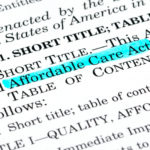[su_box title=”Keep in mind…” style=”default”]
- Single -payer health care is also known as “Medicare for All”
- Tax increases, rather than premiums, deductibles, and co-payments fund a single-payer health care system
- A single-payer health care system covers every citizen of a country from birth to death
- Many countries enjoy the benefits of a single-payer system such as lower costs. There are somen disadvantages of single-payer health care, however, such as longer wait times for care
[/su_box]
You have likely heard a call from progressive corners of the United States for “Medicare for All.” A system of Medicare for all, where everyone pays into and is covered by a single health insurance plan is officially called a single-payer health care model.
Under single payer health care, all citizens of a country receive medical care such as preventative care, emergent care, hospital and doctors visits, prescription drugs and durable medical supplies regardless of income bracket.
This would level the playing field, giving all Americans the advantage of excellent, effective medical care for a fraction of the price of the current, convoluted system. Read on to discover more about single-payer health care, the history of single payer in the U.S. and globally, the advantages and disadvantages of single-payer and more.
Enter your zip code above to find health insurance you can afford; our free quotes comparison tool can match you with the top providers in your area!
Single Payer in the U.S.
Unlike most developed countries, the United States lacks a comprehensive, universal form of social health insurance. Instead, this country has a system of private insurance. Medicaid and Medicare, two social “welfare” health plans in the United States, attempt to fill in the gaps created by a system of private insurance, where salary and employment status determine access to health care coverage.
The Affordable Care Act, passed in 2014, took further steps to ensure coverage for all Americans, implementing a government subsidy program to mitigate the cost of insurance for those earning too much for Medicaid, but not enough to afford a private plan.
Regardless of these attempts to extend coverage to all Americans, 30 million Americans are expected to be uninsured by the year 2023. Some experts have argued over the years that the only way to ensure all Americans have equal access to medical care is by creating a national health insurance plan is paid for by and covers all Americans. They argue, not only would this system be more just in extending equal coverage to all of the country’s citizens, it would also be less expensive overall. Experts have recommended this system throughout our nation’s history.
Let us take a look at how single payer health care stacks up to the current health system under the Affordable Care Act.
Single-payer Health Care versus The Affordable Care Act
Some might offer to the discussion on single-payer health care that the Individual Mandate provision of the Affordable Care Act, which requires all Americans to purchase health insurance provided by an employer, state exchanges or the federal Marketplace.
There are two reasons that the Affordable Care Act is insufficient in closing all gaps in coverage for American citizens. First, the Affordable Care Act offered funding to individual states to expand Medicaid. However, the act did not require individual states participate in the expansion. As a result, lower-middle income individuals in these states cannot afford health insurance, earn too much to qualify for Medicaid and do not earn enough to qualify for a subsidized plan.
These individuals are able to receive an exemption from the individual mandate. They are not penalized for failing to purchase an insurance plan, but they are also at health risk due to lack of coverage, non-emergent, and preventative care. This represents a substantial gap in coverage among citizens of the United States.
Advantages of a Single-Payer System
There are other differences between The Affordable Care Act and a single-payer system, beyond the latter’s coverage of every single citizen regardless of financial and social circumstances. In a single-payer system, patients are not required to meet deductibles or pay premiums and copayments. Rather, a progressive tax is imposed on the entire population to fund insurance. A progressive tax means that those with the most income and assets are taxed at a higher rate.
Another benefit of single-payer health care is patient choice. Patients are allowed to choose their doctor or hospital under this model of health care because there are no insurance companies to dictate who is “in network” and “out of network.” It is also a much simpler system, as it does not require shopping for insurance, navigating your benefits or paying fees in several forms and at several points of service.
The most far-reaching and impressive advantage of a single-payer is the tremendous cost savings it would provide for the nation as a whole and for individual citizens. An insurance-based system requires hundreds of free-standing insurance companies and policies to hire administrative staff that serve the same primary function.
Each insurance company requires agents, administrative assistants, brokers and customer service representatives that perform the same tasks as staff at the next insurance company. Centralization of insurance provision under a single-payer system streamlines this process, essentially eliminating this kind of duplication of effort. That amounts to huge cost savings overall.
Because a single-payer insurance plan would cover 320 million American citizens from birth until death, it would have substantially more bargaining power when negotiating prices for acute and ambulatory care, urgent and emergent services, prescription drugs and durable medical supplies.
Citizens of Canada, who are covered by the country’s single-payer, national insurance plan, pay far less for prescription drugs and medical supplies and nothing at the point of service for medical care.
This is because prescription drug and medical supply companies must acquiesce to the demands of this enormous plan to avoid losing hundreds of millions of customers. That translates to massive savings for individuals. In fact, 95 percent of Americans would pay less for health care under a single-payer system than they do now, even with increased taxes to cover the plan.
Disadvantages of Single-Payer Health Care
Like any enormous government program, a single-payer system would have some drawbacks. The rollout of the Affordable Care Act is one case of government run industry getting off to a rocky start. The same would likely be true of a single-pater system, and it might be quite some time before all the kinks get worked out of administering the program.
It can be argued that, by reducing the cost of health care overall, there is less incentive for people to enter the industry or to develop new technologies.
Potential physicians may not be motivated to enter the field without the enormous financial payoff. Some also argue that the affordability and availability of prescription drugs may feed a culture of drug abuse.
Some people are just afraid of an expanded government for ideological reasons. The idea of a government bureaucracy administering health care is exasperating for these people. It is true that a government-run health care system may result in longer wait time in doctors offices and hospitals, but this fact is typically overblown by detractors of public health insurance.
Examples of Single Payer Health Insurance Around the World
Many countries have implemented a single-payer health insurance plan to serve their citizens. Great Britain and Canada are the world’s leaders in the provision of national health insurance. Many residents of those countries enjoy the financial benefits of single-payer health care. There are also additional health benefits. Child mortality and all-cause mortality are lower in countries with universal health coverage.
While the U.S. will probably not see the implementation of a single-payer health care system for at least the next four years, it is important to know what kind of systems are out there when reading about politics or casting your vote.
Enter your zip code below to compare health insurance in your state now and find a plan that will cover you for years to come.
[su_spoiler title=”References:” icon=”caret-square” style=”fancy” open=”yes”]
- http://www.pnhp.org/facts/what-is-single-payer
- https://kaiserfamilyfoundation.files.wordpress.com/2013/01/7871.pdf
- https://www.healthcare.gov/
- http://www.pnhp.org/sites/default/files/A%20Superior%20System%20-%202013.pdf
- http://www.npr.org/sections/health-shots/2016/01/22/463976098/debate-sharpens-over-single-payer-health-care-but-what-is-it-exactly
[/su_spoiler]






